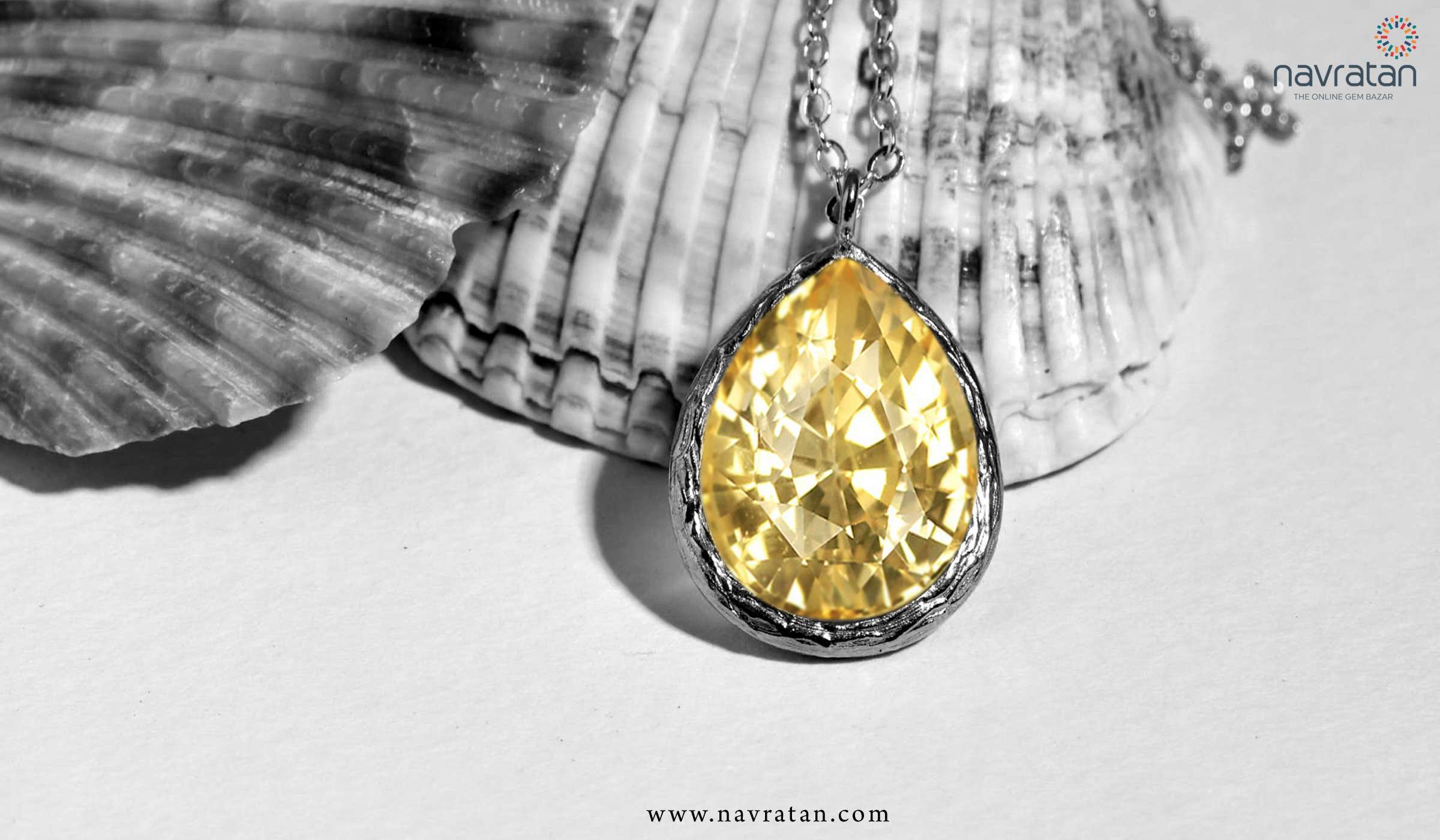Yellow sapphire’s beauty and significance span across cultures, serving as an everlasting symbol of prosperity and spiritual advancement. Find its enchanting allure as it weaves its way through ancient civilizations and mythologies alike.
Pukhraj or Yellow Sapphire Stone is associated with Jupiter, who oversees knowledge, virtue, wealth, and good fortune. Wearing pukhraj illuminates our intellect and leads us towards success in all endeavors, health, and fame.
Hindu Mythology
Yellow sapphire is a widely revered gem in Hindu mythology. It is said to bring wealth, foster business success and increase knowledge and intelligence while offering protection from evil forces and encouraging spiritual development.
Navaratna jewelry represents nine gems that symbolize each planet in our solar system and is worn by followers of Hinduism, Jainism, Buddhism, and Sikhism. Pukhraj is an ideal gemstone for those born under the zodiac sign of Taurus (April 20-May 20), as its ruling planet Jupiter plays an integral part in this ascendant. Additionally, Cancer, Leo, Sagittarius, and Pisces people may benefit from using this stone to represent their karmas, health, and finances.
Vedic astrology suggests wearing an authentic and natural Jyotish pukhraj gemstone set in gold on Thursday within an hour of sunrise to reap maximum benefit from this precious stone. To maximize these advantages, the gemstone should ideally be worn when set. Understanding the Pukhraj Ratna price ensures the acquisition of this revered stone for its significant benefits.
Ancient Greece and Rome
Ancient Greece and Rome associated yellow sapphire with the sun, a celestial body believed to foster wisdom, spiritual growth, mental clarity, and meditation.
As in much of ancient history, Greek and Roman economies relied heavily on wheat farming, but due to poor agricultural practices, it became increasingly difficult for households to produce enough of this staple food for subsistence purposes. Thus Greeks moved from living on small self-sufficient farms into cities for work purposes and trading with other cultures.
The Greeks created an exquisite culture, comprised of music, pottery, architecture, philosophy, and literature. Additionally, they developed unique art forms such as sculpture, vase painting, and fresco painting which reached their pinnacle during the Classical period.
They also produced monumental chryselephantine statues such as Phidias’ Athena Parthenos (447 BCE) and the Statue of Zeus at Olympia (c. 435 BCE). These monumental works utilized a modular method of construction that integrated gold panels and ivory limbs.
Buddhism
Yellow sapphire stone was long considered a symbol of solar power in ancient Egypt, Mesopotamia, and India, believed to channel the sun’s energy directly into the wearer and enhance vitality and physical well-being. Additionally, its healing properties were widely admired and believed to strengthen immune systems while supporting overall health and well-being. Exploring the Pukhraj Ratna price is crucial while considering its purchase for optimal effects and authenticity.
Hinduism and Vedic astrology attribute yellow sapphire (Pukhraj) to Jupiter (Guru), the planet associated with knowledge, prosperity, progeny, wealth, status, and good fortune. Wearing such an influential gemstone amplifies Jupiter’s positive effects while bestowing wisdom, prosperity, and happiness upon its bearer.
Shri Lanka is home to an attractive yellow variety of corundum known as pushparaga (Padma = lotus flower; Raga = color, attraction, desire musical rhythm pollen and pollen), although locals sometimes mistakenly refer to it as padparadscha (Padma = lotus flower, mara = color) which is incorrect translation. Pushparaga gemstone is widely considered beneficial to professionals in finance banking real estate telecommunications and related areas.
Vedic Astrology
Yellow sapphires are essential gemstones for those following Vedic (Jyotisha) astrology, which draws its inspiration from ancient Sanskrit texts known as Vedas. This system serves as an indication of past life karma’s impact on your current life while offering solutions.
Pukhraj or yellow sapphire is a gemstone associated with Jupiter in Vedic astrology that symbolizes knowledge, wisdom, and prosperity. This gemstone can assist individuals in overcoming financial hardships and achieving business success while strengthening family ties, marital satisfaction, and fertility for women.
If Jupiter is located in the 1st, 2nd, 5th, 9th, or 10th house of your horoscope chart, wearing a pure yellow sapphire could prove immensely beneficial to your well-being. Be sure to consult with a qualified Vedic astrologer before donning this precious gemstone – yellow sapphires from Ceylon may offer extra benefits!









